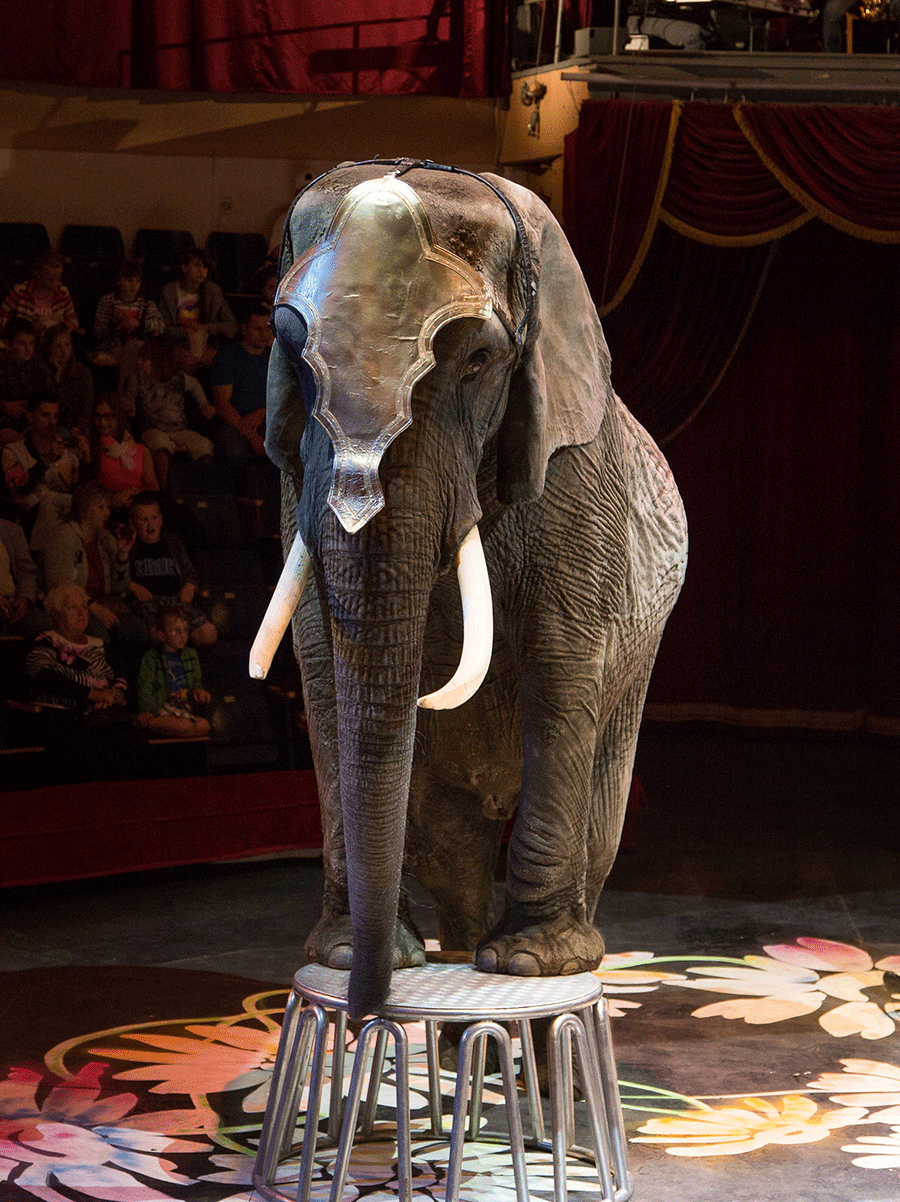There’s a romantic notion of circuses as being magical places for children, but the reality is quite different. Wild animals in circuses suffer physical and social deprivation and their training is particularly brutal.
The main welfare implications of a circus life for wild animals have been identified as limited availability of space, maternal separation, restricted social interactions, frequent traveling, and training and performance.
Our member organisation Animal Defenders International’s footage of circus animals showed abnormal behaviour, unsuitable cages and violence towards the animals. At Chipperfield’s circus in the UK, one of the oldest circuses, two lions and a tiger were found confined to cages on the back of a truck with restricted access to an exercise area.
Animals forced to live in unnatural conditions can react in ways which pose a risk to their tamers. In July 2019 a trainer in Italy was killed by tigers. Moreover, training animals to do tricks which are contrary to their natural behaviour, as well as forcing them to perform, undermines their wellbeing. In other cases, animals are cruelly disfigured, with one lion suffering the removal of his claws and teeth.
In traveling circuses, animals are transported over vast distances. Evidence collected in an Animal Defenders International report demonstrates that the problems suffered by transported farm animals, such as elevated levels of stress and the risk of falling ill, also apply to circuses.
Frequent travel also exposes animals and people to transport-related risks, such as the Gottani Circus crash in southeastern Spain where in April 2018 a circus truck carrying five elephants crashed, killing one and injuring two.
This makes it difficult to evaluate the exact source of all animals and thus the impact of their removal from the wild. The lack of proper regulations on the keeping and trade of exotic pets in many Member States, coupled with insufficient knowledge of some private keepers, undermines the welfare of the animals and pose a threat to human and animal health and biodiversity.
MEMBER STATES HAVE ADOPTED A BAN ON THE USE OF WILD ANIMALS IN CIRCUSES
OF EUROPEANS WANT TO SEE A TOTAL BAN ON WILD ANIMALS IN CIRCUSES
INCIDENTS INVOLVING WILD ANIMALS AND CIRCUS AUDIENCES OVER 22 YEARS
WHAT DOES THE PUBLIC THINK?
The majority of Europeans (65%) surveyed in 2018 by our member organisation AAP Animal Advocacy and Protection stated a preference to ban the use of wild animals in circuses, with only 22% of respondents stating that there should be no such ban. While no European Union-wide ban on the use of animals is in place yet, public opinion is reflected in the fact that 18 Member States have already adopted a ban on the use of wild animals in circuses.
Audiences are at risk of being infected by diseases or other ringside safety hazards. In 2017, Eurogroup for Animals published a report revealing that 305 incidents involving 608 wild animals and circus audiences were recorded over 22 years, with 86 people injured and 11 killed.
A petition initiated by Infocircos collected almost 1 million signatures calling for the use of wild animals in circuses to be banned in the European Union.
POLICY - CURRENT STATE OF PLAY
24 out of 27 Member States restrict the use of animals in one form or another, either with an outright ban or with bans on certain species, such as those on the Convention on International Trade in Endangered Species of Wild Fauna and Flora (CITES) list.
While there are signs of progress in individual countries, the use of animals in circuses is not bound to one country, and circuses regularly move between Member States. Therefore collective action through EU-wide regulation is required to address the problem.











